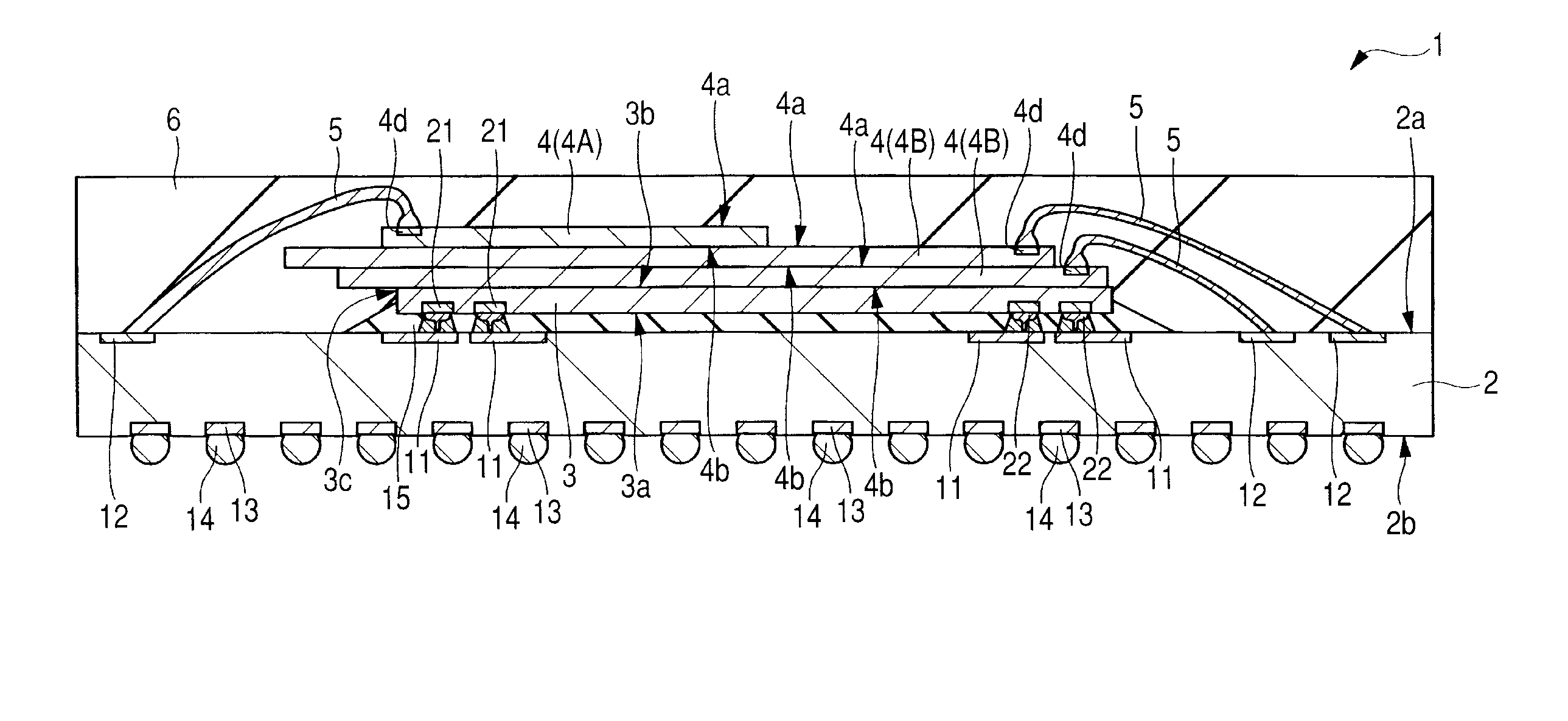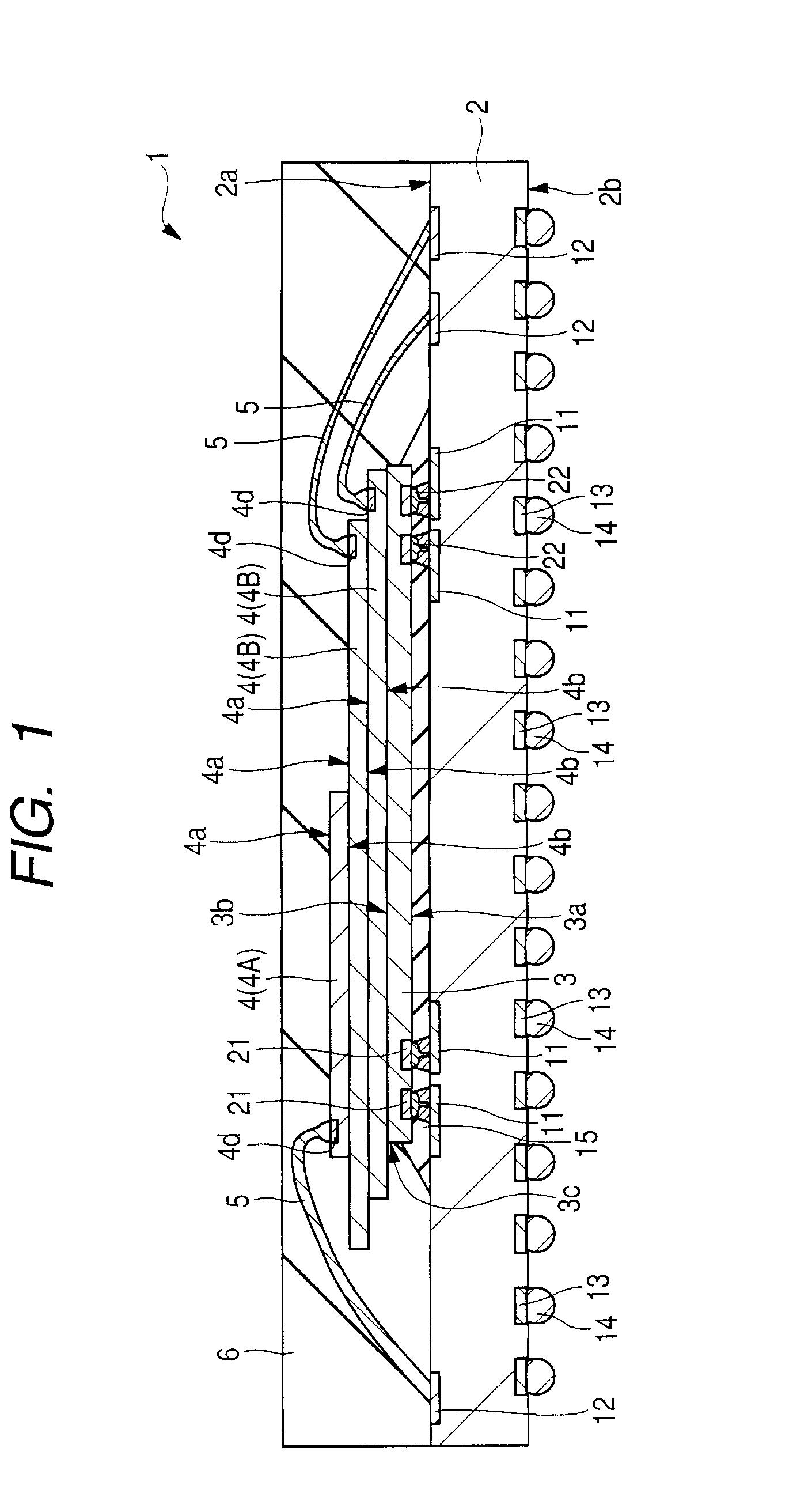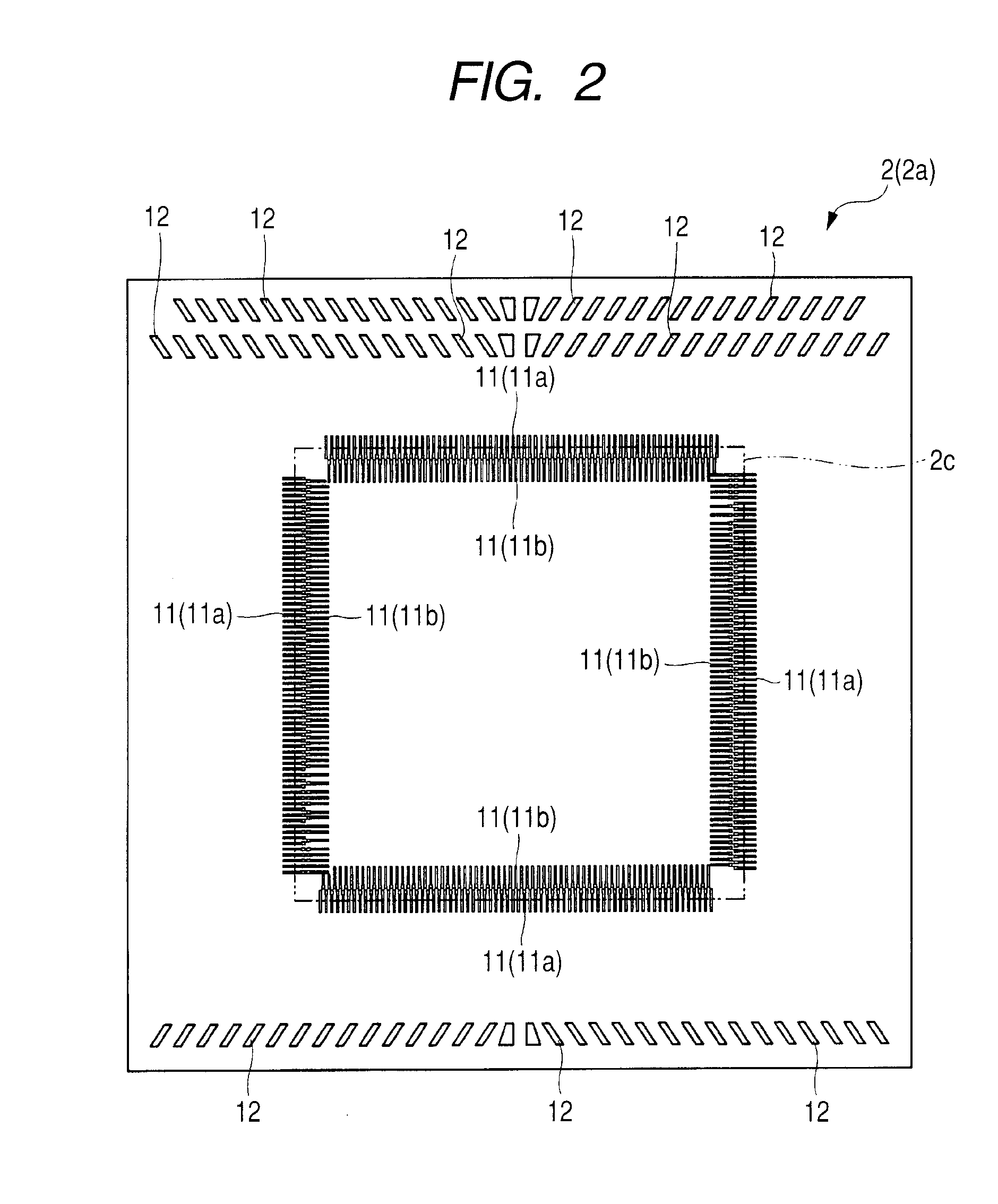Semiconductor device
a technology of semiconductor devices and semiconductor parts, applied in semiconductor devices, semiconductor/solid-state device details, electrical devices, etc., can solve the problems of deterioration of bonding reliability and bonding defects at the above-mentioned bonding portions, and achieve the effect of reducing the size of a semiconductor devi
- Summary
- Abstract
- Description
- Claims
- Application Information
AI Technical Summary
Benefits of technology
Problems solved by technology
Method used
Image
Examples
Embodiment Construction
Explanation of Description Form, Basic Terms and how to Use
[0054]An embodiment of the present invention will be described dividedly into plural sections or the like where required for convenience' sake, but unless otherwise mentioned, it is to be understood that the divided sections are not independent of each other, but configure portions of a single example, or in a relation such that one is a partial detail of the other or is a modification of part or the whole of the other, irrespective of whether the description of one is before or after the description of the other. As to similar portions, repeated explanations thereof are omitted in principle. Constituent elements in an embodiment are not essential unless otherwise mentioned and except the case where they are limited theoretically to specified numbers thereof, further, except the case where they are clearly essential contestually.
[0055]Likewise, in the description of an embodiment or the like, as to “X comprising A” or the li...
PUM
 Login to View More
Login to View More Abstract
Description
Claims
Application Information
 Login to View More
Login to View More - R&D
- Intellectual Property
- Life Sciences
- Materials
- Tech Scout
- Unparalleled Data Quality
- Higher Quality Content
- 60% Fewer Hallucinations
Browse by: Latest US Patents, China's latest patents, Technical Efficacy Thesaurus, Application Domain, Technology Topic, Popular Technical Reports.
© 2025 PatSnap. All rights reserved.Legal|Privacy policy|Modern Slavery Act Transparency Statement|Sitemap|About US| Contact US: help@patsnap.com



